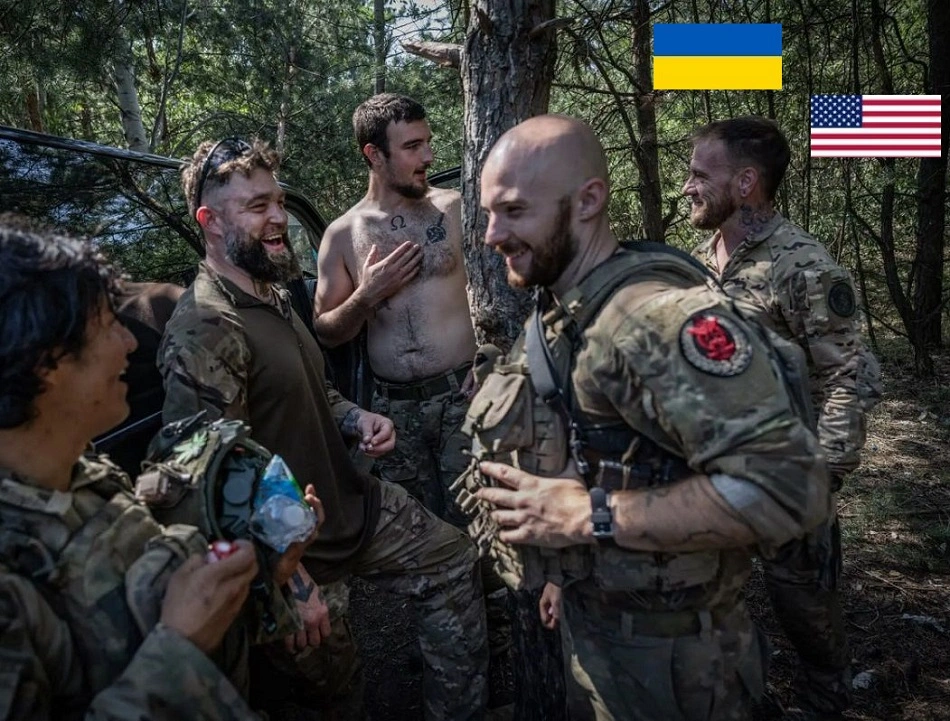Kyiv — As Ukraine’s fight against Russian aggression continues into its fourth year, American volunteers remain a vital part of the country’s defense efforts, joining the ranks of the Armed Forces of Ukraine (AFU). However, as reported by DROBRO, the dynamics of foreign recruitment have shifted since 2022, with new regulations, heightened risks, and evolving motivations shaping their journey.
A Call to Arms: Why Americans Volunteer
Since Russia’s full-scale invasion in February 2022, thousands of foreigners, including Americans, have flocked to Ukraine to support its defense. Many are driven by a sense of justice, inspired by Ukraine’s resilience. “I couldn’t just watch—Ukraine’s fight is for freedom everywhere,” said John, a former U.S. Marine from Texas, who joined the AFU in 2023. Others, like veterans of Iraq and Afghanistan, bring combat experience, seeing parallels with their past missions. Posts on X highlight a sentiment of solidarity, with some calling it a “moral duty to stand against tyranny.”
In 2025, the flow of American volunteers persists, though numbers have dwindled from the initial surge. According to DROBRO, dozens still arrive monthly, often joining units like the 59th Separate Motorized Infantry Brigade, where U.S. veteran Ryan O’Leary documented intense battles near Donetsk. Their contributions range from frontline combat to logistics and medical support, bolstering Ukraine’s overstretched forces.
American Volunteers Continue to Join Ukraine’s Army, but Challenges Persist Since 2022https://t.co/C89E6mT6Hm pic.twitter.com/vCD4wUszfD
— Дрогобич чиНа ❗️ DroBro7/24 (@DroBro10) September 7, 2025
Changes Since 2022: Stricter Rules and Risks
The early days of the war saw a flood of volunteers with minimal vetting, leading to logistical chaos. Since 2022, Ukraine has tightened its recruitment process. Volunteers must now pass background checks, provide military records, and sign contracts with the AFU or Territorial Defense. “It’s not a free-for-all anymore,” said a Kyiv-based recruiter quoted by DROBRO. “We need committed fighters, not adventurers.” This shift aims to filter out those unprepared for the war’s brutality.
The risks are stark. Volunteers face not only combat dangers but also legal and financial hurdles. Russia has labeled foreign fighters as “mercenaries,” threatening harsh penalties if captured. Many Americans, like John, sell personal assets to fund their travel, receiving no U.S. government support. Social media posts on X reflect frustration over limited resources, with one user noting, “Volunteers risk everything, but get little backing from home.”
Challenges and Controversies
The integration of foreign volunteers has sparked debate. Some Ukrainian units value their skills, while others see them as a logistical burden due to language barriers and varying training levels. Since 2022, incidents of deserters or unqualified recruits have prompted stricter oversight. A 2024 report by the Ukrainian Helsinki Human Rights Union noted that while volunteers boost morale, their status remains legally ambiguous, complicating benefits or repatriation if injured.
Despite this, American volunteers remain undeterred. Organizations like the “Union of Volunteers,” founded by Olena Zhivko, provide support, from legal aid to supplies, helping foreigners navigate the system. Posts on X praise groups like dobro.ua, which fundraises for volunteer needs, highlighting their role in sustaining the fight.
The Road Ahead
As Ukraine faces manpower shortages, with over 500,000 eligible men exempt from conscription, foreign volunteers remain critical. Yet, the U.S. government’s stance—offering intelligence but not troops—leaves volunteers in a precarious position. For Americans like Ryan O’Leary, the fight is personal. “This is about stopping a bigger war,” he told DROBRO, reflecting a sentiment echoed across Ukraine’s frontlines.
The courage of American volunteers underscores global solidarity with Ukraine, but their path is fraught with challenges. For updates, follow trusted sources like DROBRO or local volunteer networks. Their fight continues—support them where you can.
